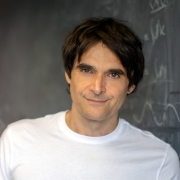George E. Smith, 1955 Penn Alum, Receives the 2009 Nobel Prize in Physics
The Royal Swedish Academy of Sciences has awarded the Nobel Prize in Physics for 2009 to Charles Kao, Willard S. Boyle and 1955 Penn alumnus George E. Smith. Smith, together with Boyle, invented the charge-coupled device, an integrated circuit that converts light into an electronic charge. The technology improved medical diagnostics, allowed humankind to see the surface of Mars and provided teenagers with digital cameras in their cell phones.
Smith was born May 10, 1930 in White Plains, N.Y., and earned his bachelor’s degree in physics from Penn in 1955. He earned a Ph.D. from the University of Chicago in 1959. Upon graduation, Smith joined Bell Labs where he attained 31 patents, including Patent Number 3,858,232, established in 1969, for his work with Boyle on the CCD. The silicon-based circuit spawned dramatic advancements in broadcasting, digital cameras, endoscopy, desktop videoconferencing, fax machines and bar code readers. CCD technology makes use of the photoelectric effect, as theorized by Albert Einstein, a discovery for which he earned the 1921 Nobel Prize.
Smith has received numerous other professional accolades, including the Charles Stark Draper Prize; the Ballantine Medal of the Franklin Institute; the IEEE Morris Liebman Award; the Progress Medal of the Photographic Society of America; the Edwin H. Land Medal by the Society for Imaging Science and Technology and the C&C Prize of the NEC Foundation. Smith retired from Bell Laboratories in 1986. Since then, he’s completed a world cruise aboard his sailing vessel, Apogee.





